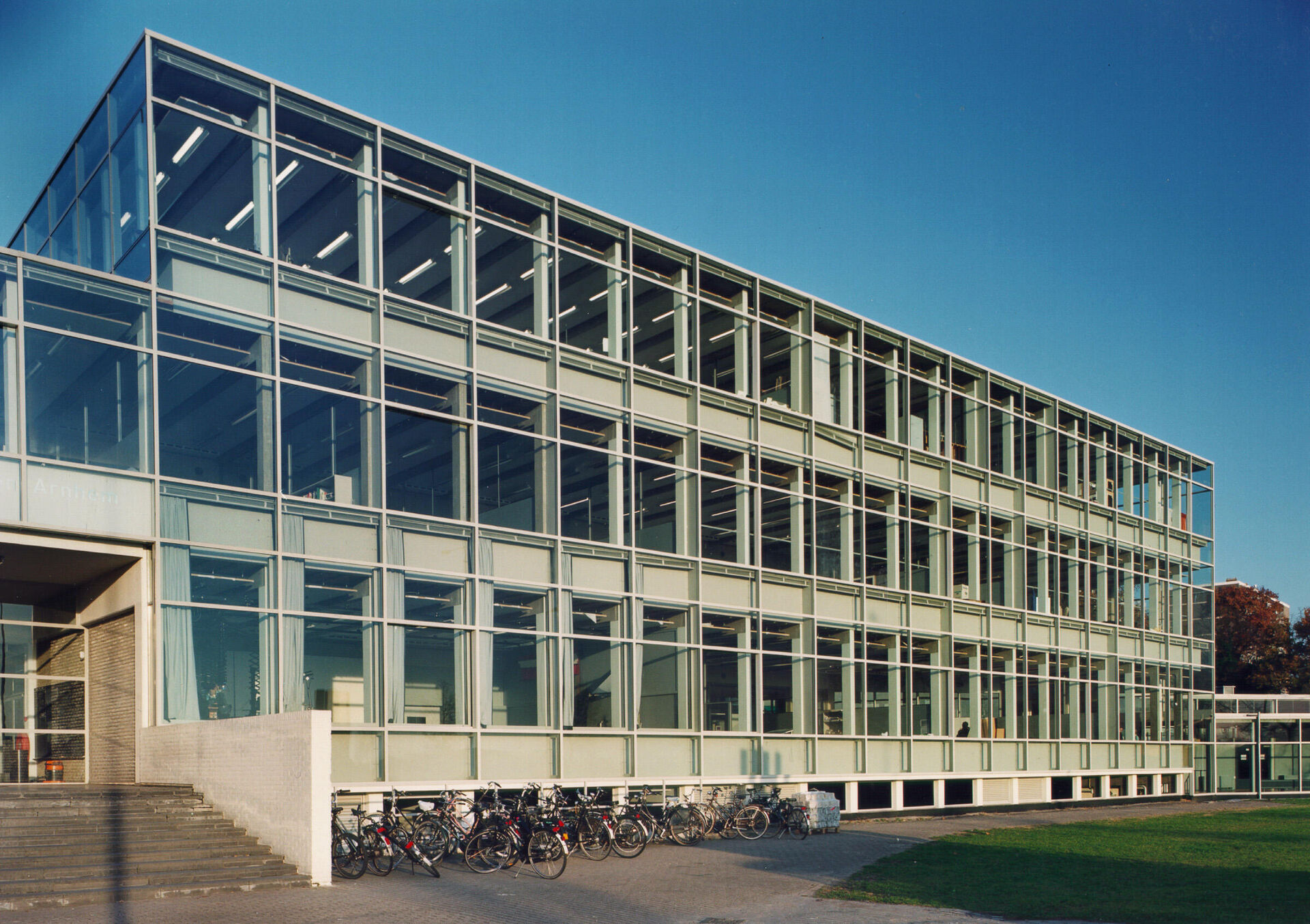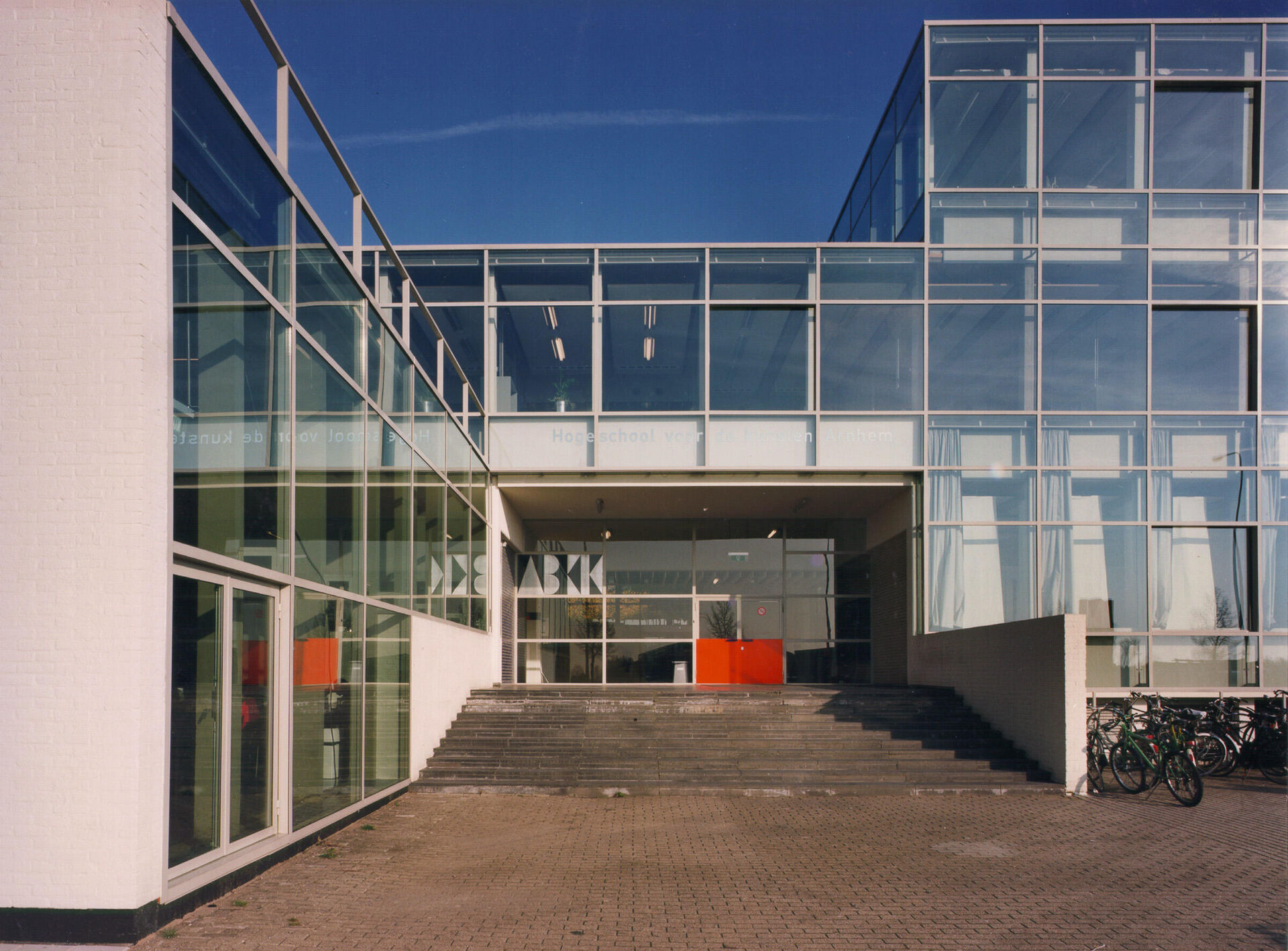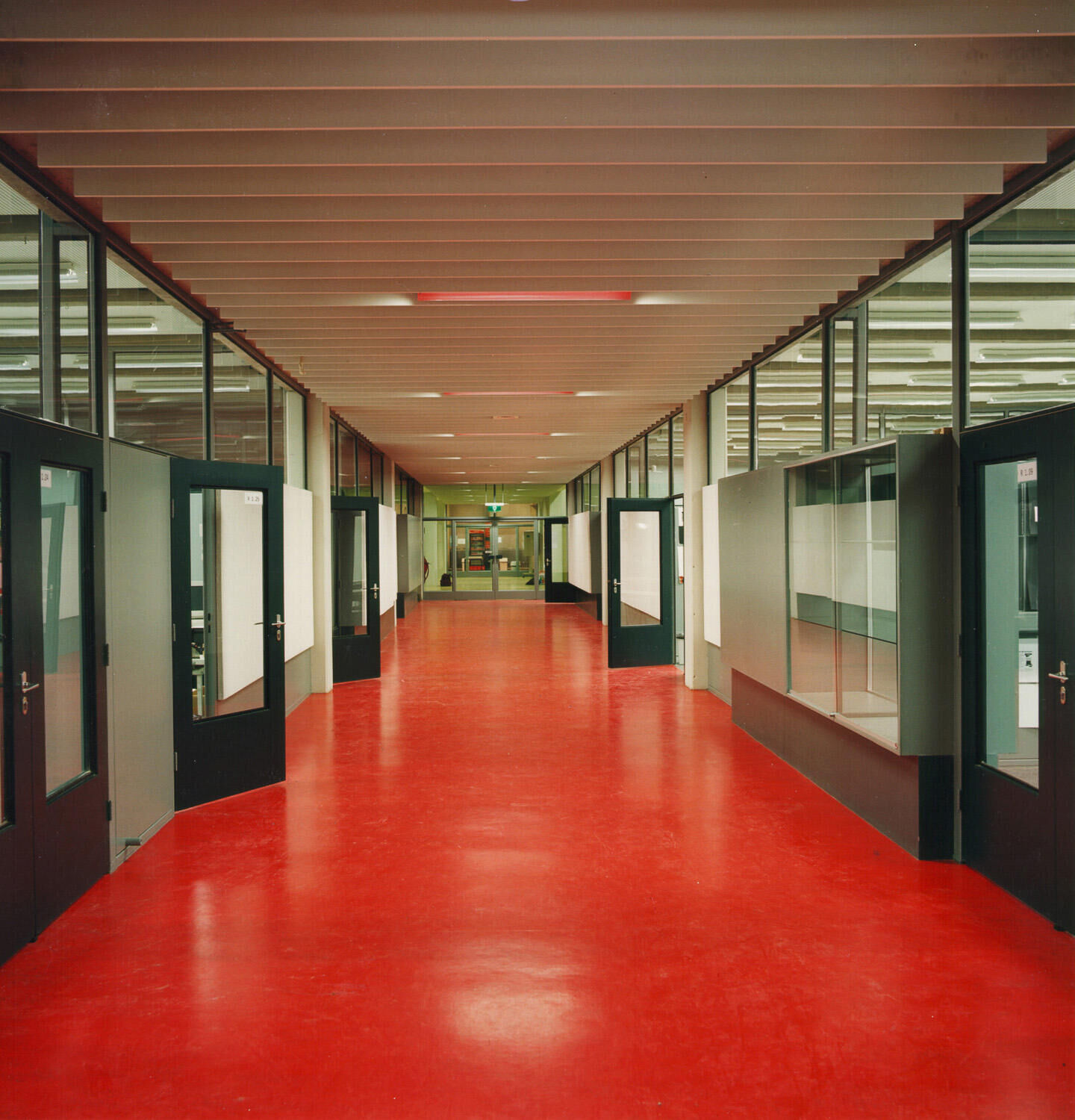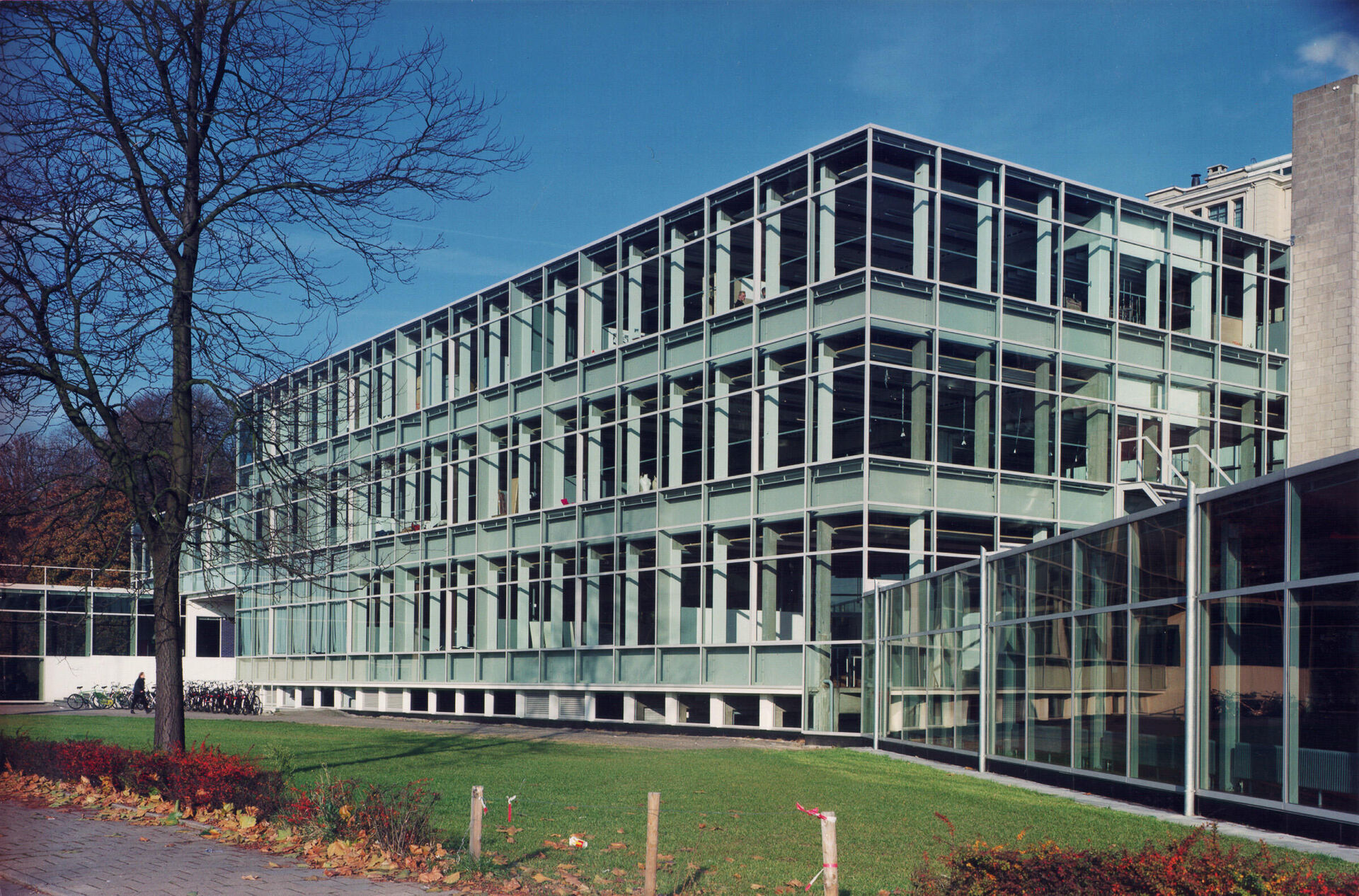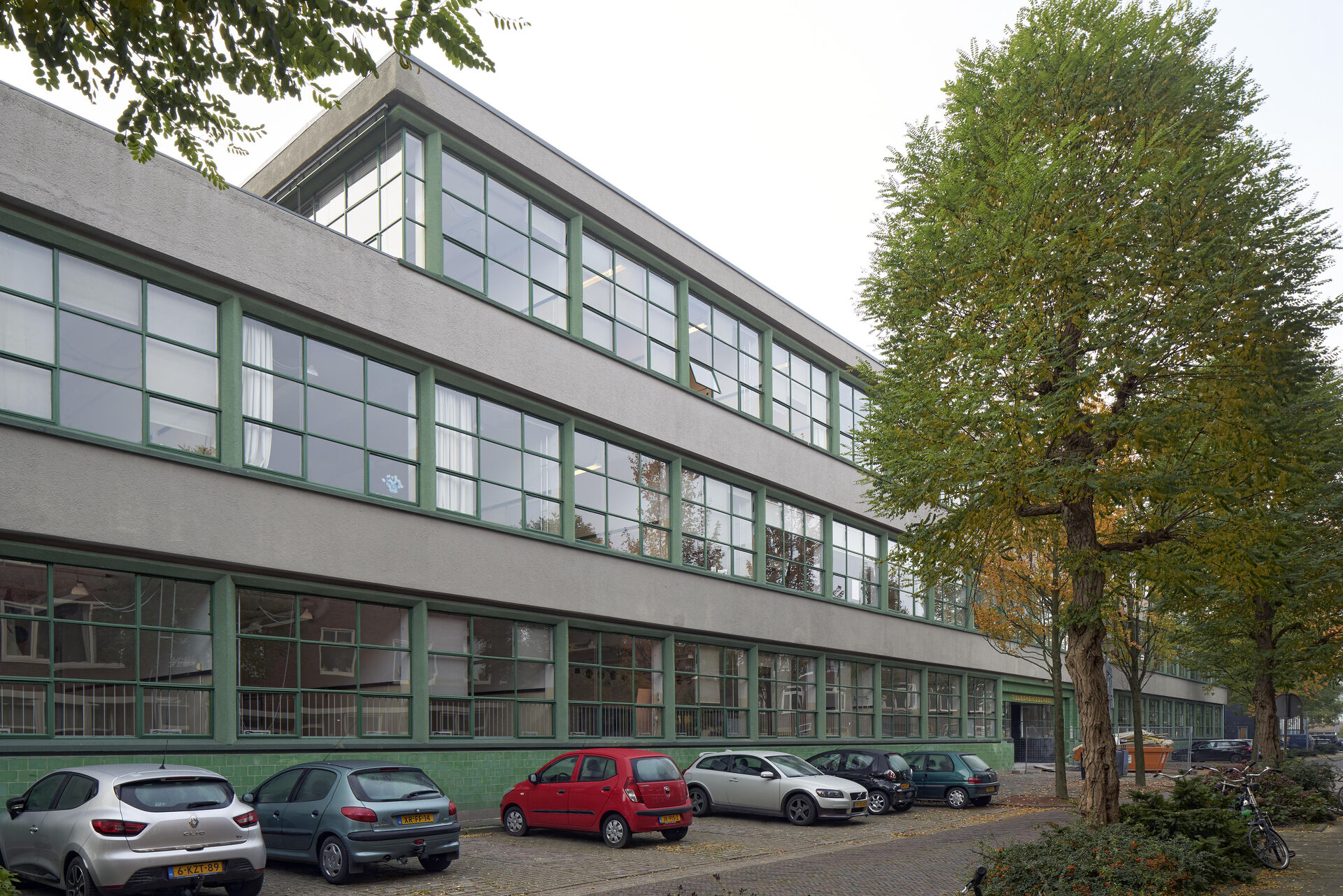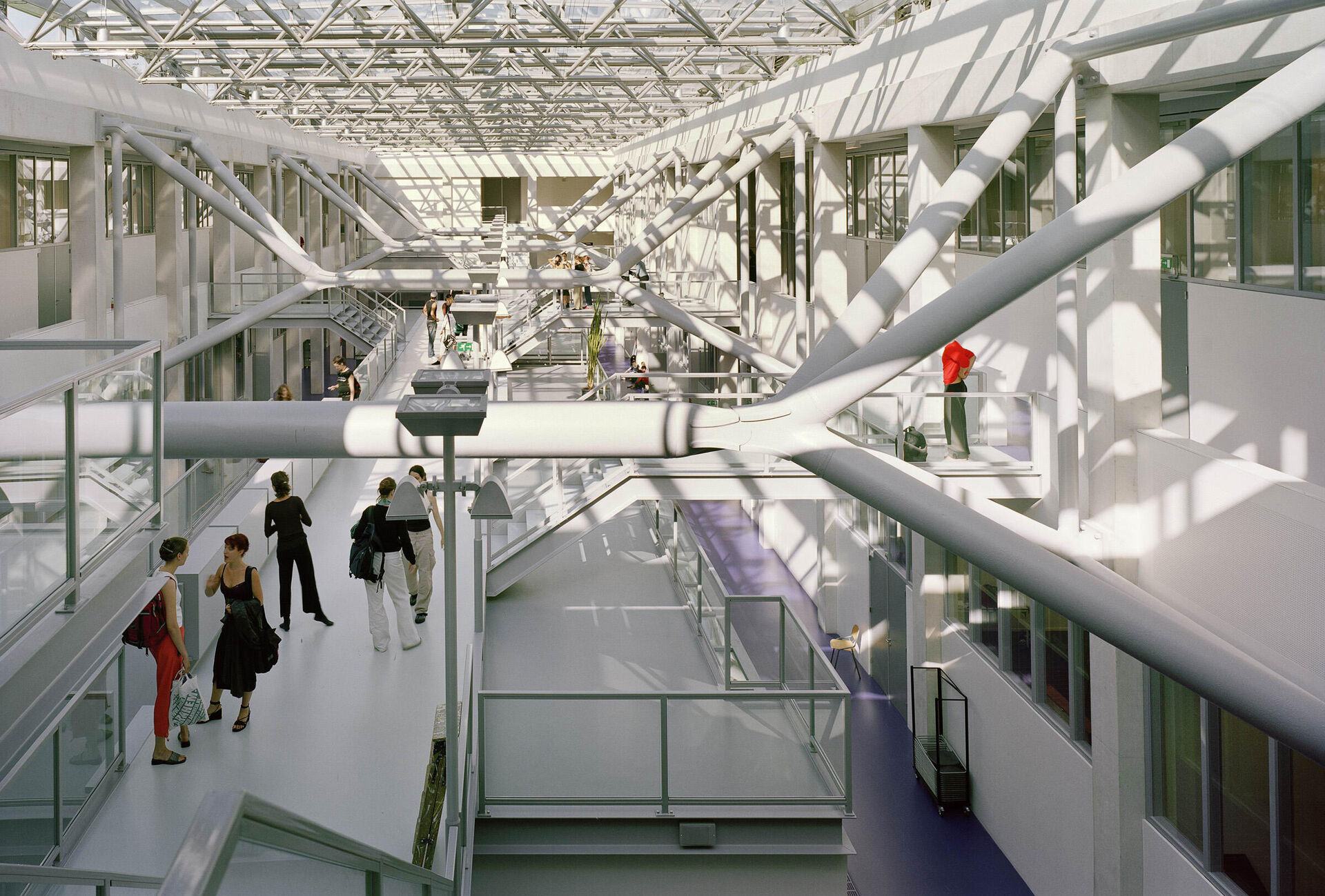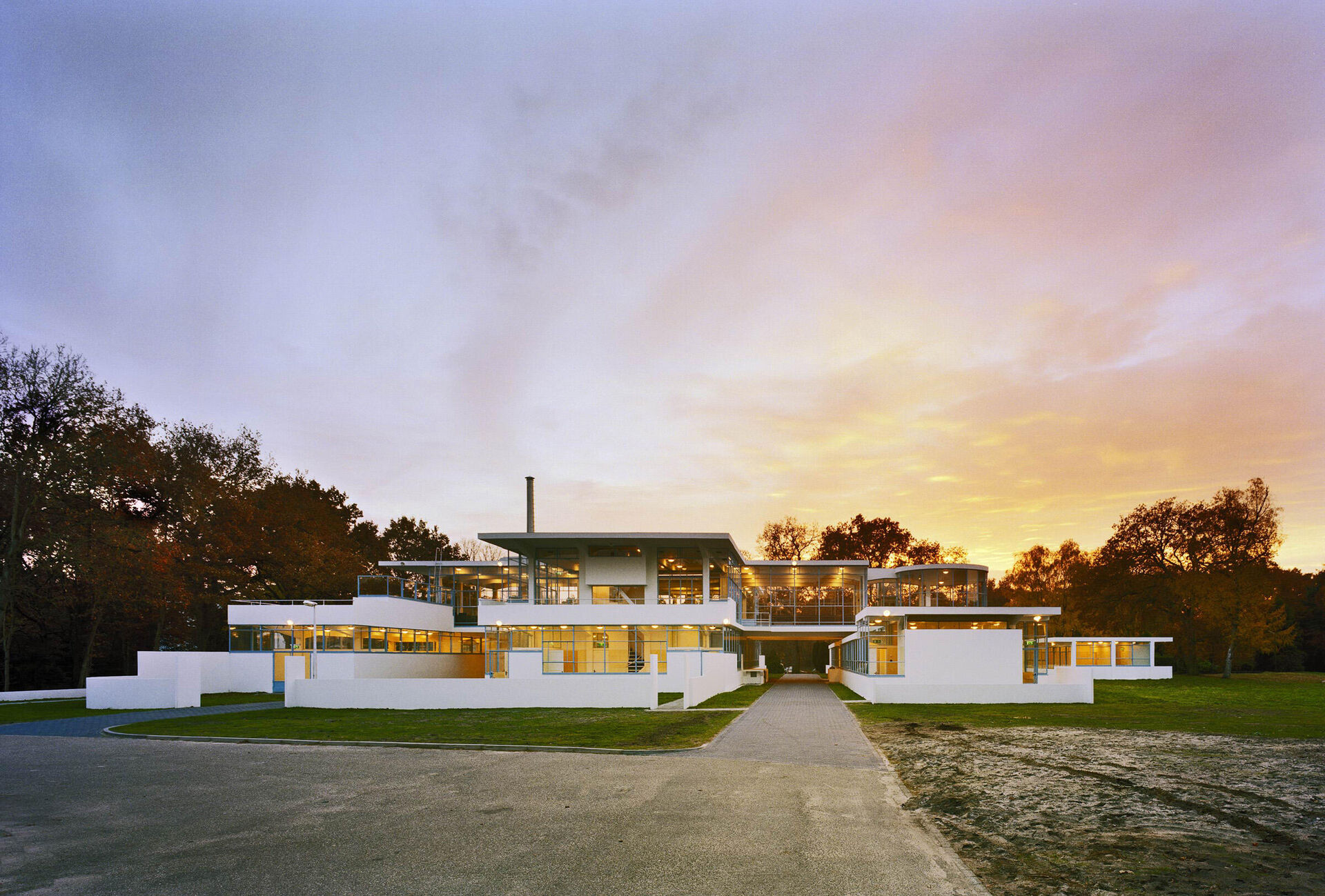- Education
- Restoration
- Sustainability
The building of the University of the Arts by Gerrit Rietveld has been completely renovated. The starting point of the restoration was to retain the architectural qualities of the original building to the greatest extent possible, whilst at the same time adapting the building to modern-day requirements of comfort. A glass walkway connects the building with the conservatory at its rear.
Gerrit Rietveld designed the Academy of Visual Arts in 1958-1963 on a park-like location between the Rhine river and a steep hill made by the terminal moraine from the first Ice Age, in the shape of a transparent, clear pavilion. Detailing of the various building elements is functional and sober. As with all minimalist buildings, the UA is typified by the complete absence of any excess. This meant that adapting the building to new ever-increasing requirements during the renovation was extremely complicated. The building is characterised by a glass skin, which has been pulled over the concrete main load-bearing structure as a three-dimensional curtain wall. The outside of the curtain wall has been detailed as evenly as possible by Rietveld. Nonetheless, during the renovation, modern-day comfort requirements such as ventilation, heating, cooling and acoustic comfort have been integrated. This has entailed a pragmatic approach which in its final form approximates the original idea of Rietveld and the associated experience to the greatest extent possible, both for the façade and for the spatial experience of the interior. Nonetheless, during the renovation, modern-day comfort requirements such as ventilation, heating, cooling and acoustic comfort have been integrated. This has entailed a pragmatic approach which in its final form approximates the original idea of Rietveld and the associated experience to the greatest extent possible, both for the façade and for the spatial experience of the interior.
- Design: 1995
- Client: ArtEZ University of the Arts
- Location: Arnhem
- Delivery: 1997
